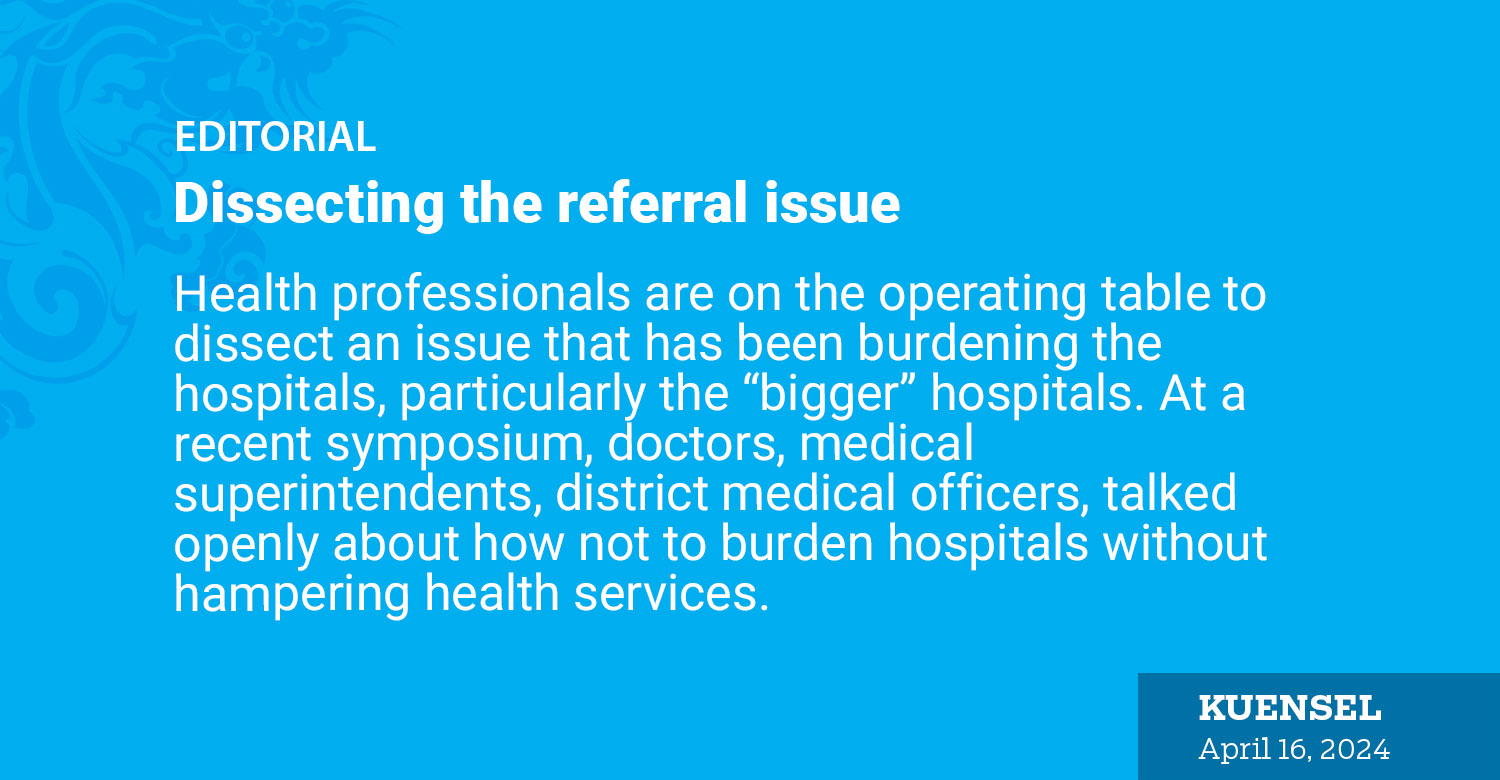Health professionals are on the operating table to dissect an issue that has been burdening the hospitals, particularly the “bigger” hospitals. At a recent symposium, doctors, medical superintendents, district medical officers, talked openly about how not to burden hospitals without hampering health services.
This is good, if not late. The biggest problem the so-called big hospitals (the regional and national referral hospitals) are facing is the sheer number of people visiting them. While a few cases are referred from the dzongkhags on genuine conditions, the rest are self-referrals. Many feel that, even for a simple illness, the regional or the national referral hospitals are the best to visit.
The pressure is there from the self-proclaimed experts. Visiting a sick anywhere will never end without the advice of needing a visit to JDWNRH. What is not known is that self-referrals or referrals on requests, is overwhelming the hospitals that have different priorities- treating serious patients, let’s say.
From the recent symposium, what has come to light is that there are strategies that can prevent referrals without compromising health care. In fact, some are feeling that referrals by choice or by request- which is very common – is adversely hampering patients.
After years, even decades, of pumping resources in improving our health centres including outreach clinics, what we have failed to convince is that a lot of common ailments can be cured at the gewog or dzongkhag level BHUs or hospitals. There are success stories of major surgeries in district hospitals even if they are not reported. Seasoned doctors are stationed in our district hospitals if patients listen to professional advice and not decide by ego or wealth.
If strategies like the Package of Essential Non-communicable Diseases and Service with Care and Compassion Initiative can reduce the burden on hospitals, it should be taken up immediately. Health officials are saying that insisting on referrals could cause the patient more harm than good by delaying treatment. A broken leg from a fall, for instance, needs immediate attention which a health assistant can provide, In fact, the first aid is the crucial part. Referral could wait. Quite often, the expectation is to be driven or even airlifted to Thimphu.
Our doctors and health officials are aware of this. There is more than their knowledge to decide referrals. Let’s be honest, many times, it depends on who is sick and not the sickness.
A good example is right under the nose of us all. In Thimphu, the national referral hospital, which should be attending to serious patients and emergencies are bogged down by self-referrals. For instance, the outreach clinics in the thromdes could attend to a lot of patients. Many prefer waiting and seeing a doctor at the JDWNRH.
There are repercussions. A doctor in Thimphu sees around 40 to 50 patients a day. Their counterparts in the countries they studied must be seeing a maximum of 20 a day. Most are not serious and can be attended to by a general practitioner or a health assistant at the clinics.
If decision makers are serious, there is no need for WHO sponsored studies to make a decision. Referring patients to India is a good example. It is done only when we do not have the expertise or the facility. A committee of doctors screen the need for referrals ensuring transparency and accountability and success of treatment.


